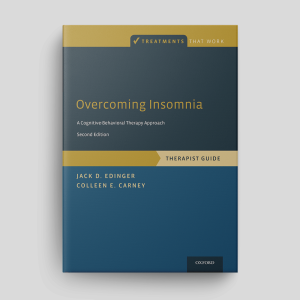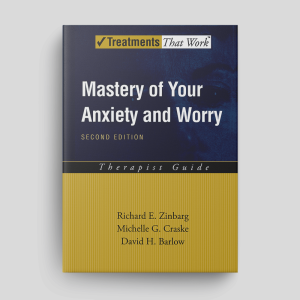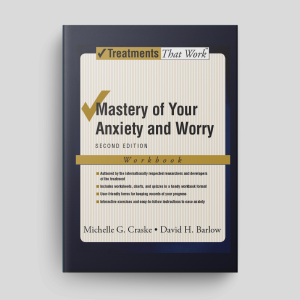Overcoming Insomnia (Second Edition): Workbook
This evidence-based workbook provides a structured cognitive-behavioral therapy (CBT) approach to help clients improve their sleep patterns, manage sleep-related anxieties, and develop lasting habits for better rest.
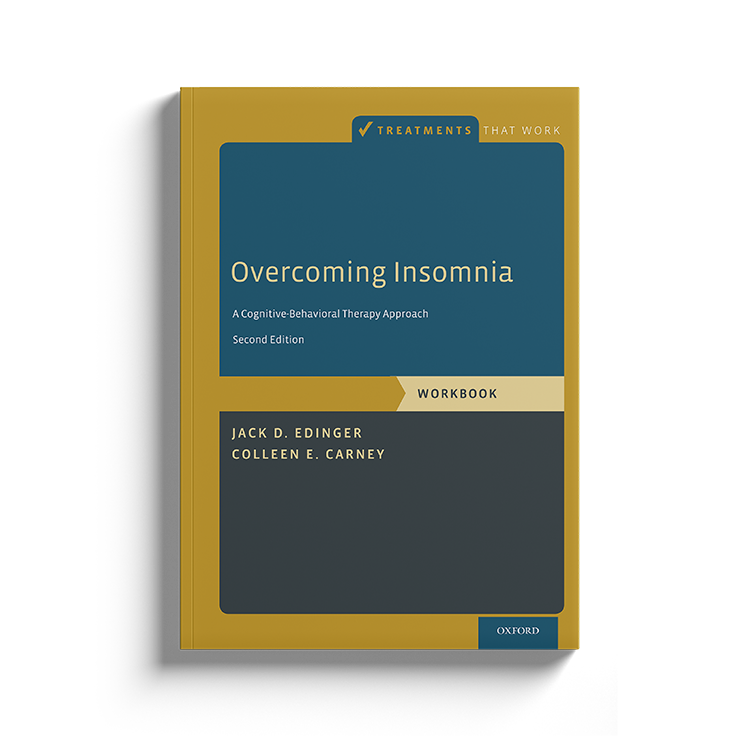
Download or send
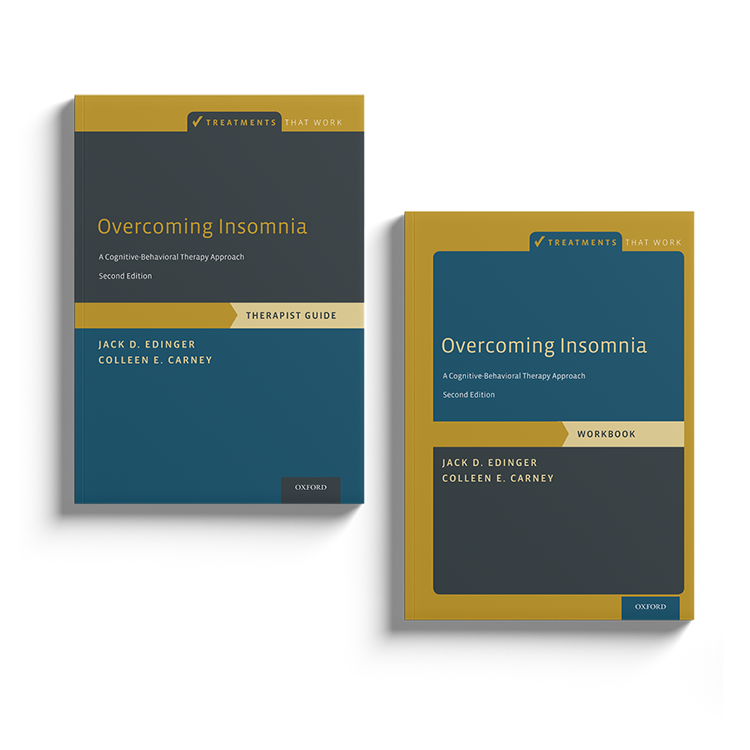
Overview
Insomnia affects millions of people, leading to fatigue, impaired concentration, and decreased quality of life. Developed by Professor Jack Edinger and Dr Colleen Carney this evidence-based CBT program is designed to address chronic insomnia. It provides step-by-step guidance on recognizing maladaptive sleep patterns, implementing behavioral strategies, and managing unhelpful thoughts that contribute to sleep difficulties. The workbook can be used independently or alongside clinical treatment, making it a valuable tool for both clients and therapists.
Why use this resource?
Cognitive behavioral therapy for insomnia (CBT-I) is the gold standard for treating chronic sleep difficulties without the risks associated with medication. This workbook provides clinicians with a structured framework to guide clients in improving their sleep through scientifically validated techniques.
- Offers a non-pharmacological approach to treating insomnia.
- Provides structured guidance on sleep scheduling, stimulus control, and cognitive restructuring.
- Helps clients track sleep patterns with easy-to-use sleep diaries and worksheets.
- Addresses comorbid psychological factors such as anxiety and worry.
Key benefits
Structure
Awareness
Adaptability
Sustainability
What difficulties is this for?
Insomnia Disorder
Chronic difficulty falling or staying asleep despite adequate sleep opportunities.
Generalized Anxiety Disorder
Persistent worry that interferes with sleep quality.
Depressive Disorders
Sleep disturbances related to mood dysregulation.
Poor Sleep Hygiene
Clients struggling with inconsistent sleep schedules, excessive screen time, or environmental disruptions.
Integrating it into your practice
Assess
Use provided sleep diaries to evaluate baseline sleep patterns and identify problem areas.
Educate
Teach clients about sleep regulation, circadian rhythms, and the impact of poor sleep habits.
Implement
Guide clients through behavioral interventions such as stimulus control and sleep restriction.
Cognitive
Help clients identify and challenge negative sleep-related thoughts.
Monitor
Track progress using structured worksheets and adjust interventions as needed.
Maintain
Develop relapse prevention strategies to sustain improvements in sleep quality.
Theoretical background and therapist guidance
CBT for insomnia (CBT-I) is rooted in behavioral and cognitive models of sleep disturbances. It addresses the three major perpetuating factors of chronic insomnia:
- Conditioned arousal. Clients develop negative associations with their bed and bedtime, leading to increased wakefulness.
- Maladaptive sleep habits. Erratic schedules, excessive time in bed, and reliance on sleep aids disrupt natural sleep regulation.
- Cognitive distortions. Anxiety, catastrophizing, and unrealistic sleep expectations maintain insomnia symptoms.
The Spielman 3P Model (Predisposing, Precipitating, Perpetuating factors) serves as the theoretical framework for understanding how chronic insomnia develops and is sustained. Research shows that CBT-I leads to significant, lasting improvements in sleep quality, often outperforming pharmacological treatments. This approach emphasizes:
- Stimulus control therapy. Strengthening the association between bed and sleep.
- Sleep restriction therapy. Consolidating sleep by reducing time spent awake in bed.
- Cognitive therapy. Identifying and challenging catastrophic thoughts about sleep loss.
- Sleep hygiene education. Encouraging lifestyle changes to support restorative sleep.
This workbook provides detailed instructions on implementing these strategies and troubleshooting common challenges faced by clients during treatment.
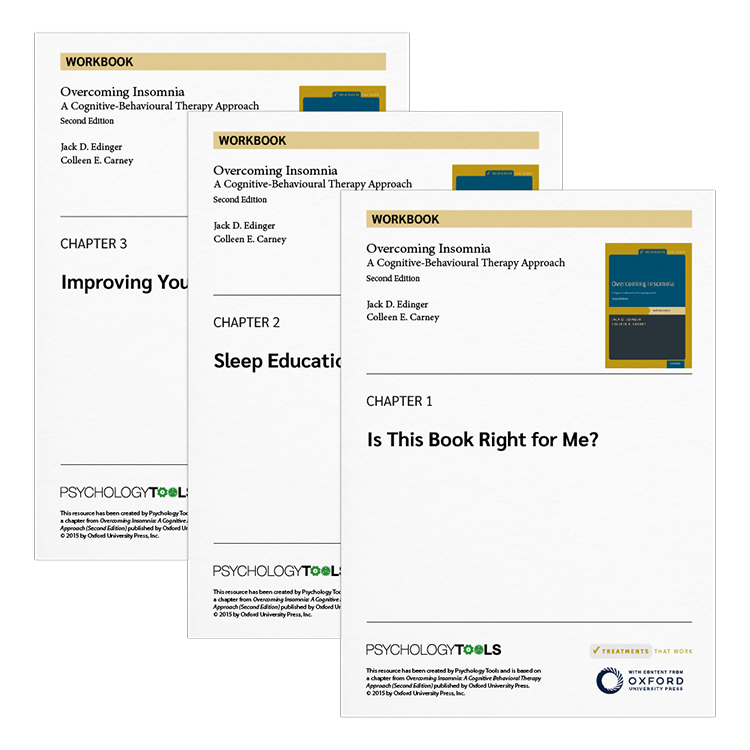
What's inside
- Sleep diaries and assessment tools.
- Step-by-step CBT-I interventions.
- Guidance on managing nighttime worry and intrusive thoughts.
- Worksheets for identifying and restructuring maladaptive beliefs.
- Practical strategies for developing long-term sleep habits.
FAQs
How this resource helps improve clinical outcomes
- Enhances clients' ability to self-regulate sleep patterns.
- Can reduce reliance on sleep medications and their potential side effects.
- Improves mood and cognitive functioning by addressing sleep disturbances.
- Provides a structured, evidence-based alternative to traditional sleep interventions.
- Supports long-term maintenance of improved sleep habits.
References and further reading
- Barlow, D. H. (2004). Psychological treatments. American Psychologist, 59, 869-878.
- Institute of Medicine (2001). Crossing the quality chasm: A new health system for the 21st century. Washington, DC: National Academy Press.
- Spielman, A. J., Caruso, L. S., & Glovinsky, P. B. (1987). A behavioral perspective on insomnia treatment. Psychiatric Clinics of North America, 10, 541-553.
- Morin, C. M., & Espie, C. A. (2003). Insomnia: A Clinical Guide to Assessment and Treatment. Springer.
- Edinger, J. D., & Carney, C. E. (2015). Overcoming Insomnia: A Cognitive-Behavioral Therapy Approach. Oxford University Press.
Just enter your name and email address, and we'll send you Overcoming Insomnia (Second Edition): Workbook (English US) straight to your inbox. You'll also receive occasional product update emails wth evidence-based tools, clinical resources, and the latest psychological research.
Product
Company
Support
- © 2026 Psychology Tools. All rights reserved
- Terms & Conditions
- Privacy Policy
- Cookies Policy
- Disclaimer
Working...
We value your privacy
This site uses strictly necessary cookies to function. We do not use cookies for analytics, marketing, or tracking purposes. By clicking “OK”, you agree to the use of these essential cookies. Read our Cookie Policy
